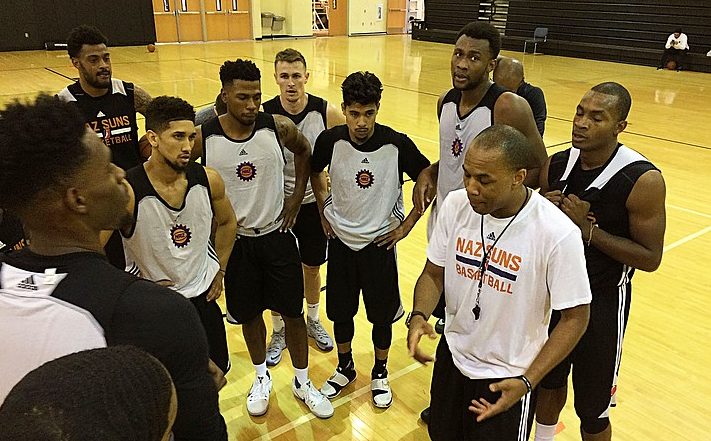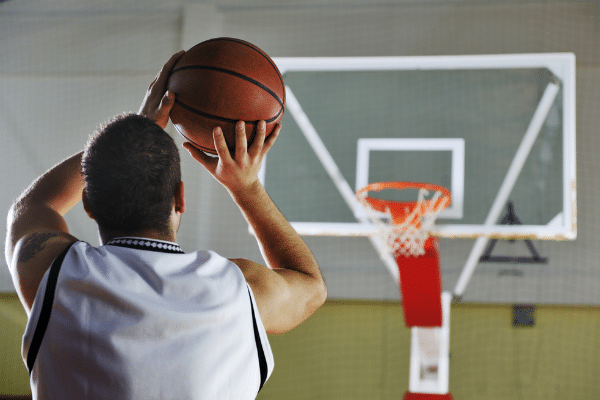
Developing an Effective Off-Season Training Program: Balancing Skill Work, Conditioning, and Individual Growth Plans
An effective off-season training program is crucial for basketball players to improve their skills, enhance their physical conditioning, and prepare for the next season.
A well-structured off-season plan helps players build on their strengths, address weaknesses, and maintain peak performance throughout the year. Here’s a comprehensive guide to developing an effective off-season training program for basketball players.

1. Set Clear Goals
Before creating an off-season training program, it’s essential to establish clear and specific goals for each player. This helps in designing a program that targets their individual needs and aspirations.
Identify Areas of Improvement
Assess each player’s performance from the previous season. Identify areas where they need improvement, such as shooting accuracy, ball-handling skills, or defensive techniques.
- Performance Review: Conduct individual assessments based on game footage and statistics to pinpoint specific areas for development.
- Player Input: Encourage players to reflect on their own performances and share what they believe are their strengths and weaknesses.
Establish Performance Goals
Set measurable goals for the off-season, such as increasing vertical jump height, improving shooting percentage, or enhancing agility. Ensure that these goals are realistic and achievable.
- SMART Goals: Utilize the SMART criteria (Specific, Measurable, Achievable, Relevant, Time-bound) to create effective performance objectives.
- Personal Goals: Help players set personal development goals, like mastering a specific move or improving their free throw percentage.
Focus on Skill Development
Include goals that focus on skill enhancement, such as mastering new techniques or improving existing skills. This tailored approach allows players to work on areas that will have the most significant impact on their performance.
- Skill Mastery: Encourage players to not only work on weaknesses but also refine and master their strengths.

2. Design a Comprehensive Training Program
Develop a well-rounded training program that includes various components to address different aspects of a player’s development.
Strength and Conditioning
Incorporate strength training exercises to build muscle and improve overall fitness. Include exercises that enhance core strength, upper and lower body strength, and explosive power.
- Weight Training: Utilize free weights, resistance bands, and bodyweight exercises to develop strength specific to basketball movements.
- Plyometrics: Implement plyometric exercises to improve explosive power, which is crucial for jumping and sprinting on the court.
Skill Development
Design drills and workouts that focus on specific basketball skills, such as shooting, dribbling, passing, and defense. Tailor these drills to the player’s position and role on the team.
- Position-Specific Drills: For example, point guards might focus on ball-handling and passing accuracy, while centers may concentrate on post moves and rebounding techniques.
Cardiovascular Fitness
Include cardiovascular workouts to improve endurance and stamina. Activities like running, cycling, or swimming can help maintain cardiovascular health.
- Interval Training: Implement high-intensity interval training (HIIT) to simulate the demands of a basketball game, which includes short bursts of high intensity followed by rest.
Flexibility and Mobility
Incorporate stretching and flexibility exercises to enhance range of motion and prevent injuries. Yoga or dynamic stretching routines can be beneficial.
- Dynamic Stretching: Focus on dynamic stretches that prepare players for movement on the court, rather than static stretching, which is more effective post-workout.
3. Implement a Structured Training Schedule
A structured training schedule ensures that players stay consistent and make steady progress throughout the off-season.
Create a Weekly Plan
Develop a weekly training schedule that balances different training components. Include specific days for strength training, skill drills, cardiovascular workouts, and rest.
- Weekly Breakdown: A typical week might include strength training on Mondays, skill development on Tuesdays and Thursdays, cardio on Wednesdays, and rest or recovery on Sundays.
- Progressive Overload: Ensure that the schedule gradually increases in intensity or complexity to promote continual improvement.
Plan Rest and Recovery
Allocate time for rest and recovery to prevent overtraining and allow the body to heal. Incorporate active recovery activities like light jogging or stretching.
- Importance of Rest: Emphasize to players that recovery is just as vital as training for performance enhancement.
- Injury Prevention: Proper recovery strategies can help prevent injuries and fatigue.
Adjust for Individual Needs
Tailor the training schedule to accommodate individual player needs, preferences, and availability. Ensure that each player receives adequate attention and support.
- Flexible Scheduling: Be open to adjusting schedules based on players’ commitments or specific training requirements.
- Individualized Focus: Some players may need extra sessions focusing on their specific weaknesses, which should be factored into the overall plan.

4. Incorporate Basketball-Specific Drills
Include basketball-specific drills that simulate game situations and enhance players’ on-court performance.
Shooting Drills
Design drills that focus on shooting technique, accuracy, and consistency. Include spot shooting, shooting off the dribble, and game-speed shooting drills.
- Shooting Under Pressure: Incorporate scenarios where players shoot under fatigue or with a defender closing out to simulate game conditions.
Ball-Handling Drills
Implement drills that improve dribbling skills, control, and maneuverability. Use cone drills, dribble relays, and one-on-one challenges.
- Variety of Dribbling: Include drills that require players to use both hands and various dribbling techniques to enhance versatility.
Defensive Drills
Include drills that enhance defensive skills, such as on-ball defense, closing out on shooters, and defensive footwork.
- Defensive Rotations: Teach players how to communicate and rotate defensively during scrimmages to enhance their overall defensive IQ.
5. Track Progress and Make Adjustments
Regularly monitor players’ progress to ensure they are meeting their goals and making improvements.
Use Performance Metrics
Track key performance indicators such as strength gains, skill improvements, and fitness levels. Use tools like fitness trackers or performance logs to measure progress.
- Regular Assessments: Schedule assessments at the beginning, middle, and end of the off-season to measure gains and areas needing attention.
Evaluate and Adjust
Review players’ progress periodically and make adjustments to the training program as needed. Modify drills, exercises, or schedules based on performance and feedback.
- Flexibility in Training: Be open to changing techniques or approaches based on what players are finding effective or challenging.
Provide Feedback
Offer constructive feedback and support to help players stay motivated and focused. Celebrate achievements and encourage continued effort.
- Positive Reinforcement: Recognize and reward efforts and improvements to foster a motivated training environment.

6. Focus on Mental and Tactical Development
Off-season training is also an opportunity to work on mental and tactical aspects of the game.
Mental Toughness
Incorporate exercises and techniques to build mental resilience, such as visualization, goal-setting, and stress management strategies.
- Visualization Techniques: Encourage players to visualize successful plays and scenarios to enhance their confidence and performance under pressure.
Game Situations
Simulate game scenarios and strategic decision-making to enhance players’ understanding of basketball tactics and improve their on-court IQ.
- Situational Drills: Create drills that mimic game-ending scenarios where players must make quick decisions and execute plays under pressure.
Leadership and Teamwork
Encourage leadership development and teamwork through group activities and team-building exercises.
- Team-Building Activities: Organize activities that foster trust, communication, and collaboration among players.

7. Plan for Transition Back to In-Season Training
As the off-season comes to an end, plan for a smooth transition back to in-season training and competition.
Gradual Transition
Gradually shift the focus from off-season training to in-season conditioning and skill refinement. Adjust the intensity and type of workouts to align with the demands of the upcoming season.
- Incorporate Scrimmages: Introduce more scrimmages to help players adapt to the increased intensity of in-season competition.
Incorporate Team Workouts
Begin incorporating team practices and scrimmages to build chemistry and refine team strategies.
- Establish Team Dynamics: Utilize early practices to foster relationships and communication among players, especially new members of the team.
Maintain Conditioning
Ensure that players maintain their conditioning levels during the transition period to avoid a performance drop-off at the start of the season.
- Endurance Maintenance: Focus on maintaining cardiovascular fitness and strength through targeted conditioning sessions leading up to the season.
Developing an Effective Off-Season Training Program Conclusion
Developing an effective off-season training program involves setting clear goals, designing a comprehensive training plan, implementing a structured schedule, and incorporating basketball-specific drills.
Tracking progress, focusing on mental and tactical development, and planning for the transition back to in-season training are also essential components.
By following these guidelines, coaches can help their players enhance their skills, improve their physical conditioning, and prepare for a successful upcoming season.



